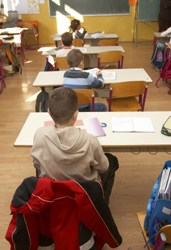Learning physics through child's play
When it comes to learning physics, children often have difficulty grasping and applying concepts. One way to overcome this challenge is with the constructionist approach to learning which holds that people construct new meaning from current knowledge structures. Hence when applying this theory to children, play is seen as a crucial part of enhancing cognitive development. The LAB OF TOMORROW project has adopted such an approach, creating an innovative and concrete pedagogical framework which can support the implementation of emerging technology in everyday learning. Through the LPS, 3D movement of any object within a certain field of view during an experiment or activity can be reconstructed with a high level of accuracy. Since it uses real life experiments, it serves as a useful educational tool for teaching physics in schools. The main benefits of the LPS are that its construction is easy to apply and regulate and that it is accompanied by particular software capable of processing the captured data. The system is comprised of cameras that observe the area of the experiment or activity and can record the position of an object (such as a ball) in that location. The course of the object is then recorded as are any players or additional activity taking place. The cameras are linked to a personal computer via corresponding ports. A user friendly software sub-module operating within the project's software platform allows presentation and processing of the recorded frames. In this way, students may recover the frames which refer to the same time parameter from both cameras onto the PC screen. Following this, the student identifies the object in each frame and marks it using the mouse in order to create the appropriate set of x, y, z coordinates. The software program uses these coordinates to produce the absolute coordinates (xo, yo, zo) of the object. The system was used exclusively in field trials for over a year in schools in Austria, Germany and Greece and had very positive results.



